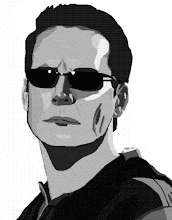Types Of Guitar Amplifiers
During the '60s, the guitar amp greatly evolved to where it is today when guitarists of that era experimented with deliberately overloading their amp to create Distortion. There also used to be a time when no self respecting audio engineer would even consider recording an electric guitar without getting the best guitar amp he can lay hold of, crank up the volume and place a rugged dynamic mic (sometimes a padded condenser mic is also used) close to the speaker grille in order to get a great guitar cut. You need to buy a great guitar amp.
Signal Amplification StageThe signal amplification stage is the 'business' stage of any guitar amp. Asmall guitar amp will be just fine if you are playing the guitar in a jazz group. Iput a wall of gobos (sound deadening device) in between them and I hit go while recording both the guitar amp and vocal mic from each room.
Input StageThe input stage of the guitar amp accepts the input signal either from the guitar pre-amp or directly from the guitar itself. The power of a guitar amplifier is measured in watts (abbreviated W). When getting an electric guitar amp, make sure to test the amp at the store.
Aparticular Marshall guitar amp cabinet will produce recognizable sounds. Musical instruments dealers also sell other accessories like guitar amps, keyboard controllers, computer music hardware, stands and footstools, cables and cable accessories, speakers, straps and strap locks, microphone accessories, studio furniture, racks and cases, acoustic foam, headphones and headphone amps, covers, power supplies and batteries, music books, and more. They are usually the one you take for live applications as they are robust and are less sensible to ambient noise, which also can be good in the studio to record a drum kit or a guitar amplifier.
EffectsThe last major element to consider when buying a guitar amplifier is the built in effects it includes. Tube guitar amplifierThe first amps to become available were tube amps. So, buy a guitar amp (as good as you can afford) and get such tools to model the other ones that you love but can only wish for.
A Jazz Guitar AmplifierWhilst it could be said that there is "no jazz amp" there are a number of considerations for the jazz guitarist when selecting an amplifier. Modern electronics are often used to produce a broader range of tones than found in most tube based guitar amplifiers. It is the 'business' of any amplifier (be it voice or guitar amp) to faithfully amplify the incoming signal.
There are many types of guitar amplifiers ranging from the smallest which is normally 10 watts up to 500 watts. If you wish to find out more about the technical side of guitar amps, there are several good books that cover the topic pretty thoroughly. Another desirable feature of guitar amplifiers, particularly for beginners, is a CD input.
PowerWhen reading about a guitar amplifier, the first thing that is always listed is the power rating. Output StageThis is the final stage of all guitar amps. Guitar amps have character.
Musical instruments stores also sell recording equipment, DJ equipment, and live sound equipment, along with the other accessories like guitar amps, keyboard controllers, computer music hardware, stands and footstools, cables and cable accessories, speakers, straps and strap locks, microphone accessories, studio furniture, racks and cases, acoustic foam, headphones and headphone amps, covers, power supplies and batteries, and more. It is very important that there is proper matching between the available input signal impedance and specified guitar amplifier's input signal impedance. Nowadays, there are many guitar amps, which have a pre-amplification stage incorporated into them.
An electric guitar has electromagnetic pickups transforming the vibrations from the strings into currents that in an guitar amplifier becomes sounds. That said, you can"t possibly buy every guitar amp cabinet out there just because you want to take advantage of their various sound colors. The M-Audio has been working on producing the upgrades and improvements on the feedbacks and has recently made a new version 2 firmware in which the M-Audio Blackbox has 40 amp models as well as the capability of producing emulations for most of the guitar amps.

